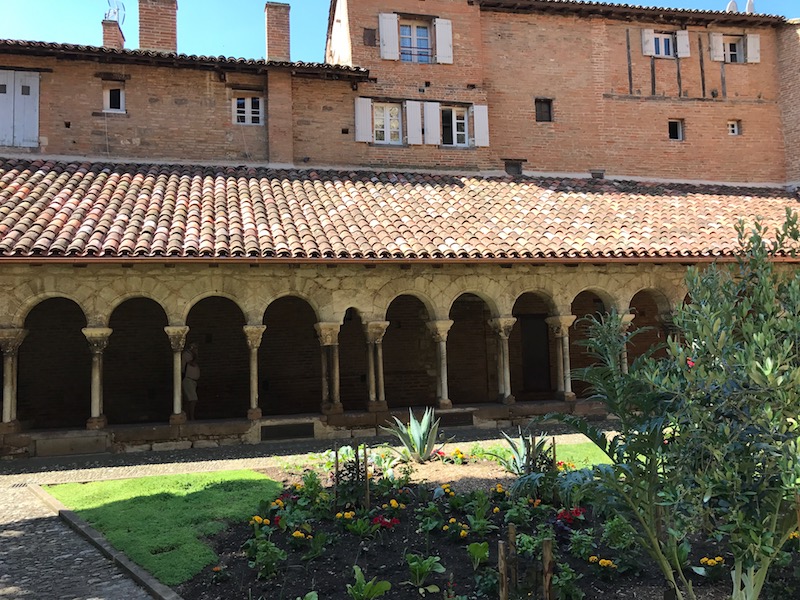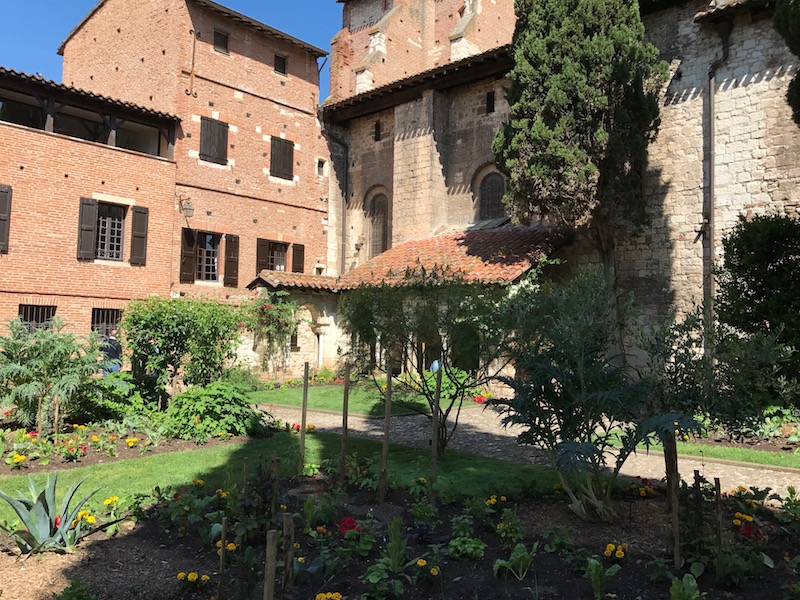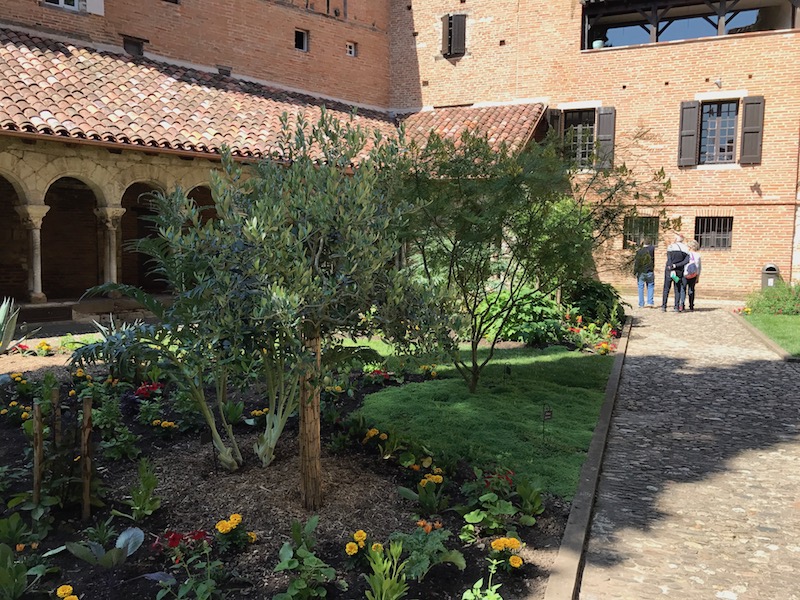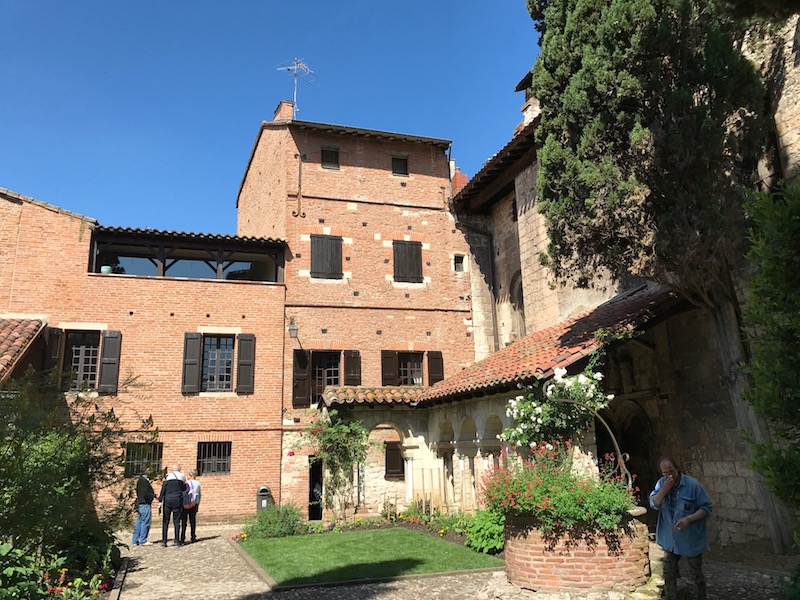Our Blog - Albi: The Collegiate Church of Saint-Salvi and the Cloisters
The Collegiate Church of Saint-Salvi and the Cloisters was our first stop and it was a good opening for the day. The building is one of the oldest in Albi and you can see 3 different ages within the entire complex. I didn't really know what a "collegiate" church was, so I did a bit of investigation. A collegiate church is where daily worship is maintained by a secular community of clergy. It is similar to a cathedral although it is not the seat of a bishop and has no actual responsibilities within a diocesan. The church itself goes back to the year 943, when the land was donated to build a church (which is not visible today) dedicated to Saint Salvi. The current church dates back to the 11th century and, as many churches that old, it has had multiple updates to it. This is seen here by the blending of Romanesque and Gothic styles. Looking up the stairs to the door, you can clearly see this, with the Romanesque rounded arch over the door, contrasting to the more Gothic window with the pointed arch, to the left side of it.
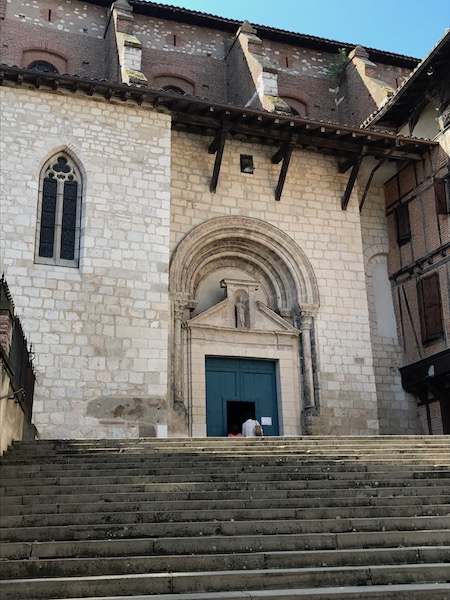
Other pictures from the exterior, and you can again see the 11th century Roman base (rounded arches) topped by another level in the same white stone, but this with more pointed Gothic arches from the 13th century, and then another red brick layer with a watch tower that was added later.
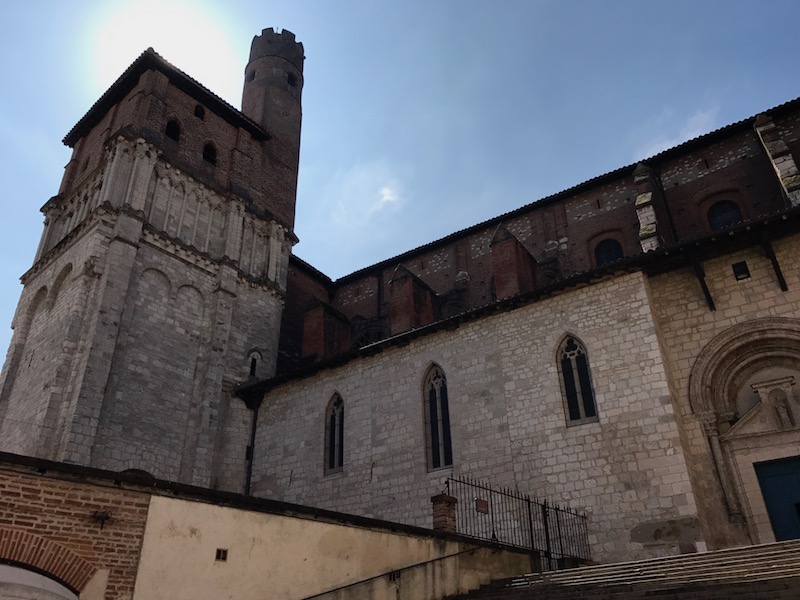

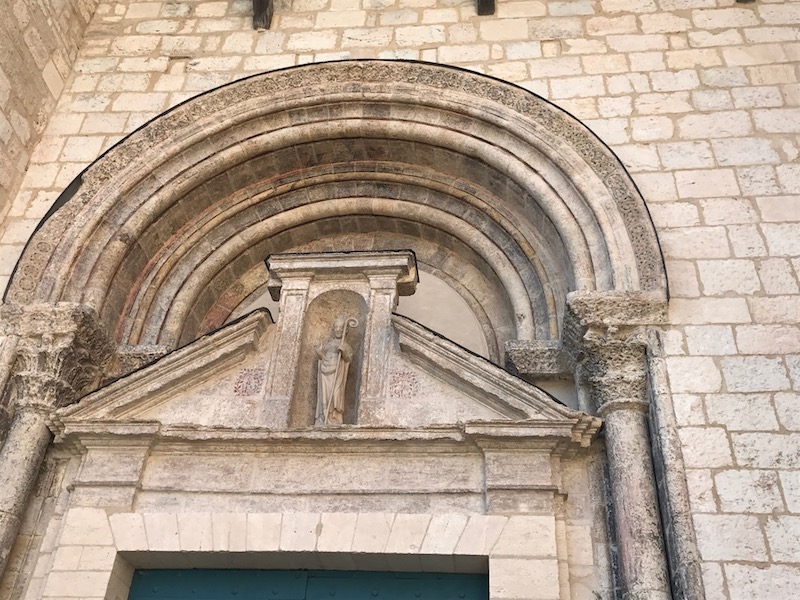
As you enter, there is a really nice marble urn for the holy water.

At the rear is a set of polychrome wood carvings called the Ecce Homo group, which dates from the late Middle Age (late 15th - early 16th century). There are 7 life-sized figures that depict an episode from the Passion, in which Christ (shown bound in the middle) dressed in a purple robe and crowned with thorns. On either side of him are scribes of members of the Sanhedrin. The pictures show all 7, going left-to-right.
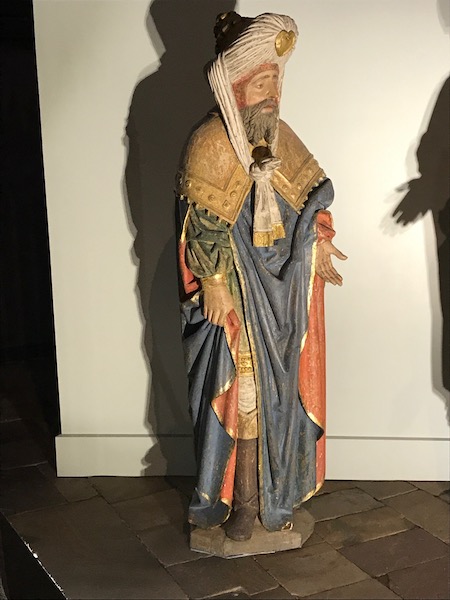
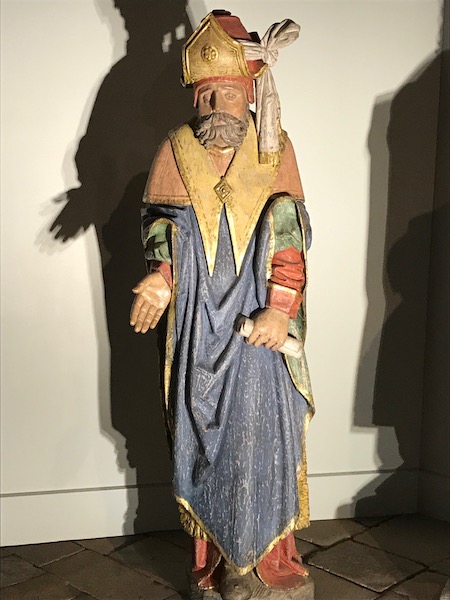

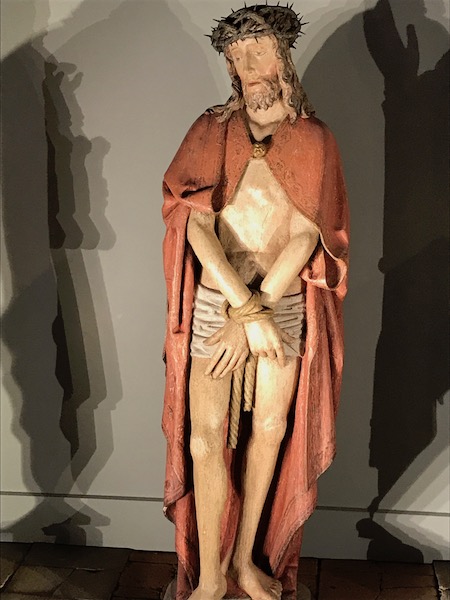
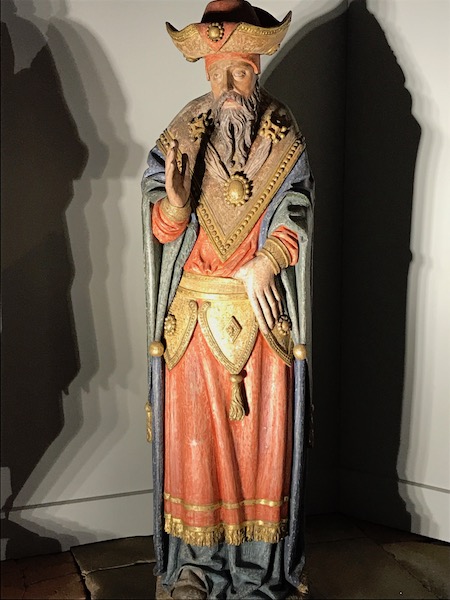
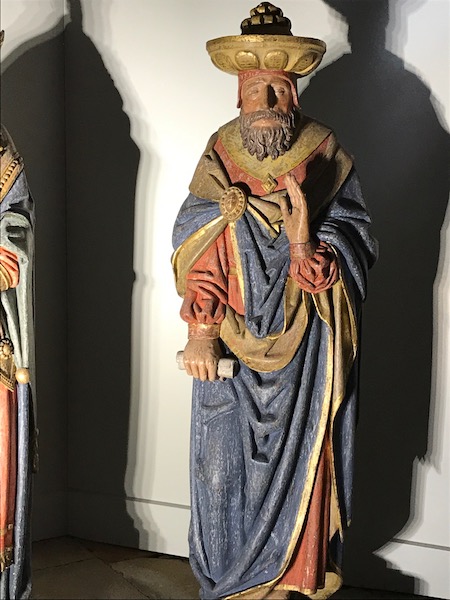
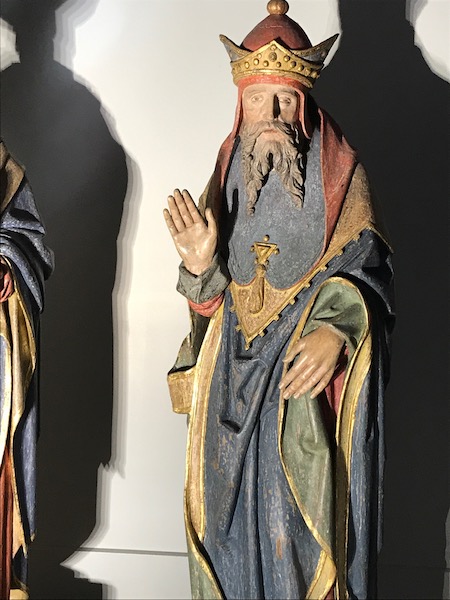
The inside of the church itself is somewhat plain (compared to the Cathedral that we'll visit later). As with many older churches, there is a really nice neo-gothic carved covered pulpit.

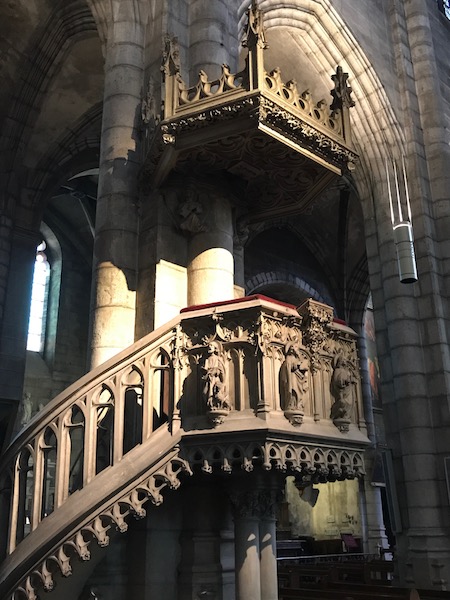
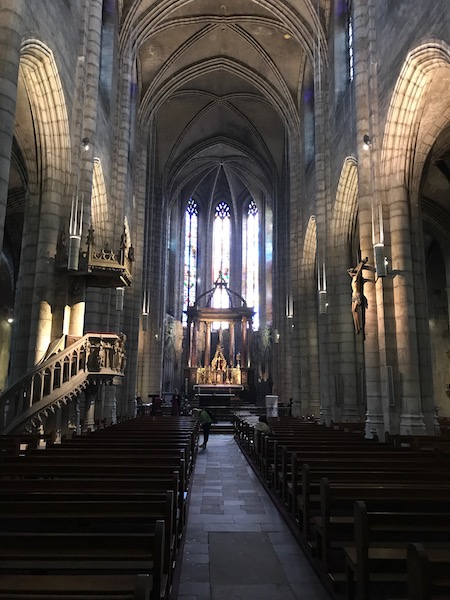

The high alter is made of marble and is crowned by a baldachin. Around it is a 15th century flamboyant Gothic-style choir.


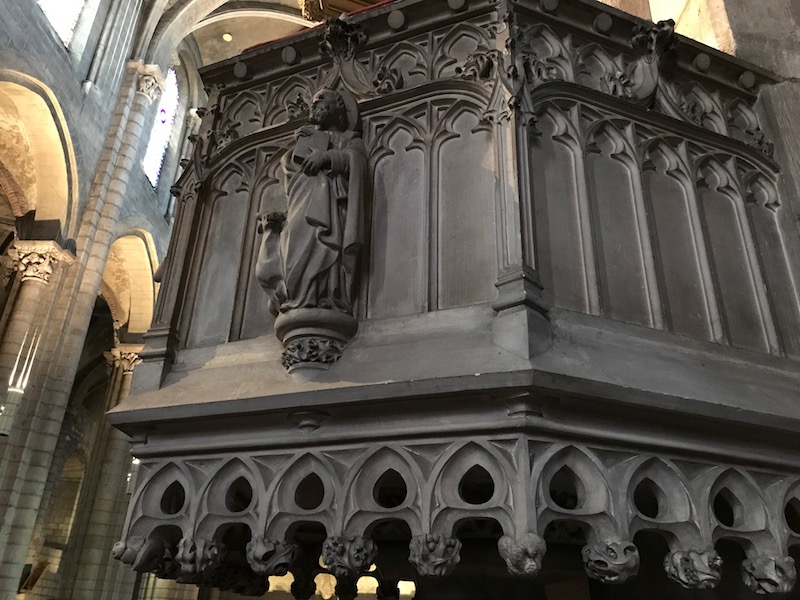
Around the outside are several smaller chapels, and I've got just a couple to showcase. The first is the Saint Roch chapel. Saint Roch is supposedly very popular in the South of France and he was worshipped starting in the 15th century as a protector against the plague. The neo-flamboyant altar has a statue of Saint Roch in the middle, dating for the 17th century, made of carved wood which has been painted and gilded. On either side, hanging on the wall, are gilded boxes. These are reliquaries dating from the 17th century that hold bones of 4 martyrs.

This is the Sacred Heart chapel, built in the 14th century.

Lastly, the chapel of souls in purgatory, which also dates to the 14th century. The neo-gothic altar is made of black and white marble.

The organ was made in 1737 by the same person who built the great organ in the Cathedral (you'll see later).
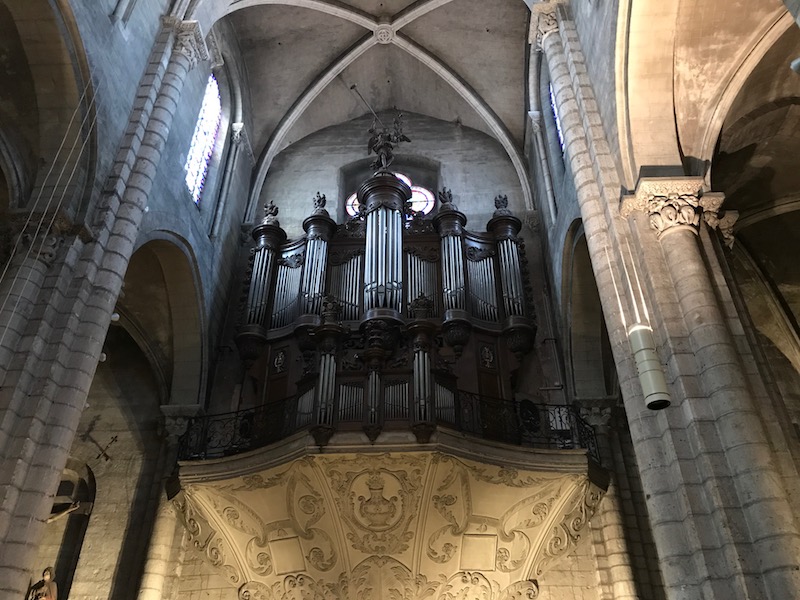
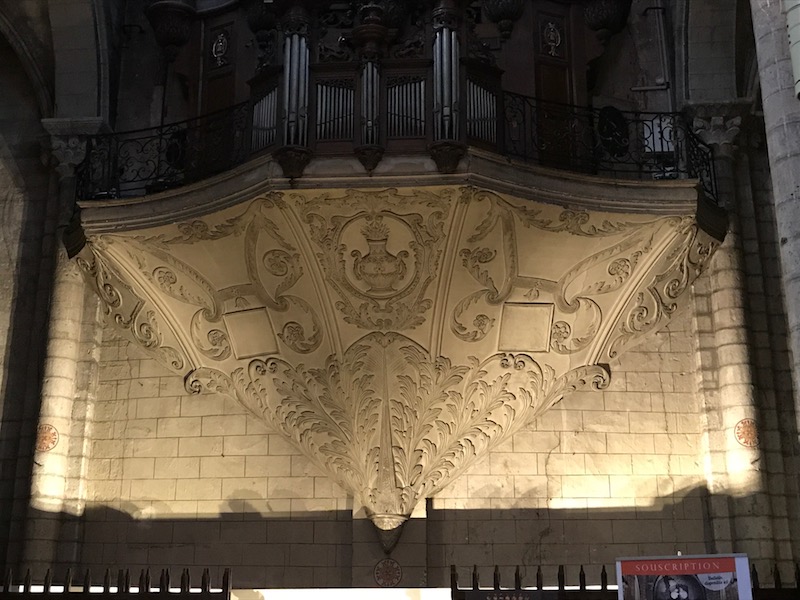
This is the Calvary, which today is at the back of the church. However, it was probably located in the center of the nave long ago. This polychrome wood set, dating from the 15th century, includes Christ on the cross, the Virgin Mary, and Saint John.
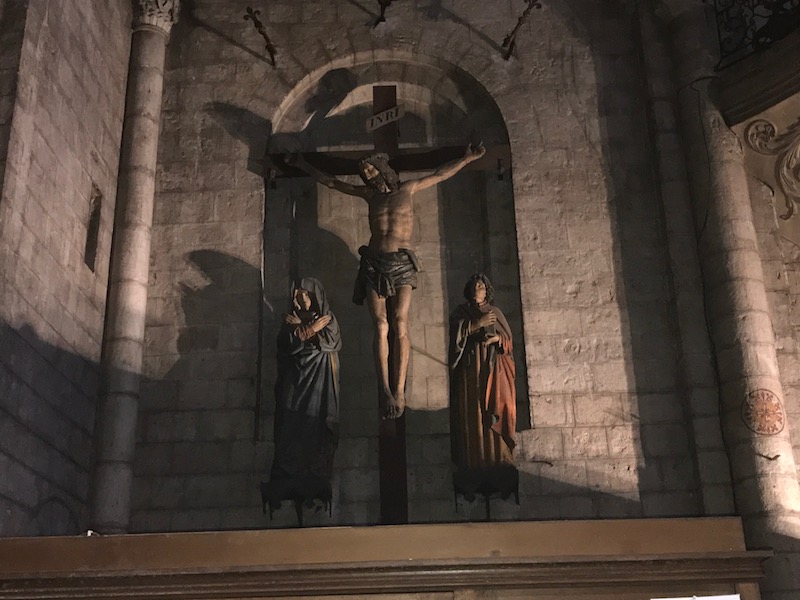
The Cloister is very typical, with a courtyard and a covered arcade running down one of the sides. Again, you can clearly see the different architectural styles here ... romanesque rounded arches in stone at the bottom and the later additions on the top in red brick.
